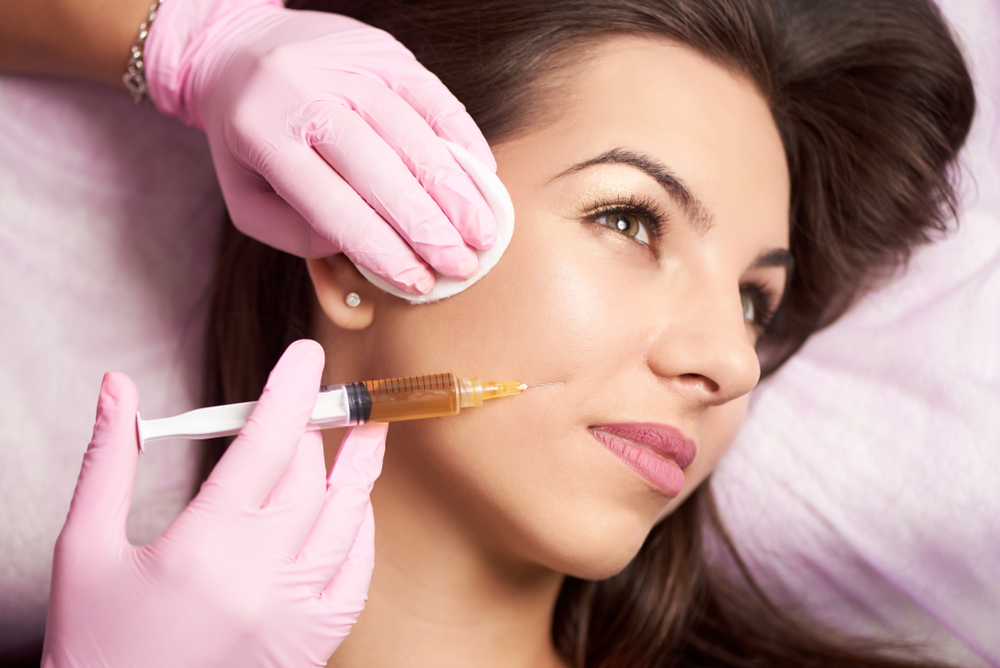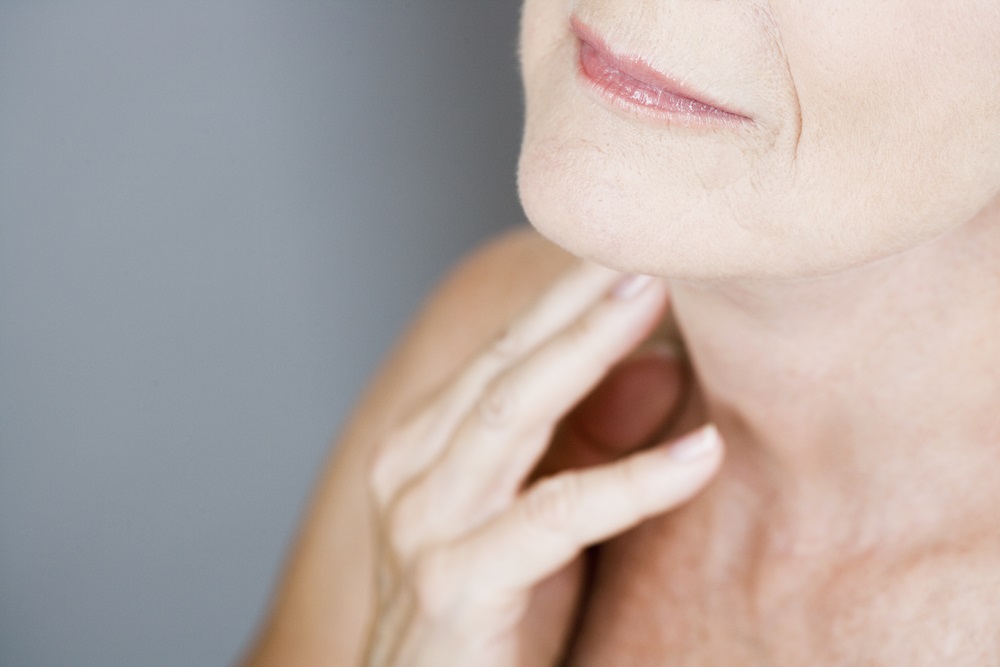- Sunken cheeks are an inevitable part of aging for many of us.
- Several treatment options are available to help plump those cheeks, including fillers and surgery.
- Natural remedies and facial exercises may be a good low-cost option for some people, but most of these options have not yet been proven to be effective.
Although sunken cheeks, dark eye circles, and a bony figure were the trends of high-fashion not so long ago — just take a look at Naomi Campbell and Kate Moss at the height of their careers — these days beauty is all about the full and plump.
Unfortunately, it’s an inevitable part of aging: the skin begins to thin, sag, and generally lose its luster. One of the key ways that aging skin affects how you look is through hollow sunken cheeks.
Hollow cheeks appear to recede inward into the facial bones rather than project outward. This creates a more prominent jawline and highlights the cheekbones. Although some people like the look of such depressions on the face — it creates a slimmer appearance — others see them as markers of age.
If volume loss in your cheeks makes you feel self-conscious, then you might want to consider a cheek augmentation procedure.
Causes of sunken cheeks
As people age, the bodies produce less collagen. Collagen gives skin elasticity and plumpness. When skin doesn’t have enough collagen, it starts to sag, wrinkle, and dull.
The body also stops producing as much subcutaneous fat, the subdermal fat that makes cheeks plump, and may also stop supporting the muscle structure that contributes to more rounded and less bony facial features.
What’s more, the fat pads found in the cheeks begin to fall over time due to gravity, leaving behind, quite literally, sagging skin and bones. More visible nasolabial folds, which deepen as you age, will also contribute to a hollow look.
Besides aging, there are several other reasons why a person might develop hollow cheeks. Poor diet or undereating can cause significant fat loss that leads to a sunken appearance, while smoking and poor skin health can cause the blood vessels to stop delivering essential nutrients to the facial skin.
Certain diseases or illnesses — especially those that cause rapid weight loss, such as anorexia — can compromise cheek fat and lead to that hollow, sunken look.
Treatment for sunken cheeks
Most sunken cheek treatments focus on the plumping factor — fillers, for example — but certain surgical procedures can also be used to permanently boost cheek volume. Which one is right for you will depend on your particular situation, budget, and aesthetic goals.
Many plastic surgeons recommend a combination of several treatments for the best results.
Soft tissue fillers
Soft tissue fillers and hyaluronic acid fillers like Juvéderm, Restylane, and Radiesse are probably the most common options for treating hollowed cheeks. These treatments are injected directly into the mid-face or hollowed section to volumize the cheek (malar) area. This non-surgical cheek enhancement option is an ideal choice for people who want a quick and simple treatment, but there are some drawbacks.
The primary pitfall of cheek fillers is that they’re temporary, with each treatment lasting between six months and a year. As a long-term solution, dermal fillers can become costly and require a lot of maintenance.
The cost varies based on which type of injection is used, but you can expect to pay between $500 and $1,500 per treatment.
Fat grafting
Unlike soft tissue fillers, structural fat grafting — also known as a fat transfer or microlipoinjection — is a permanent solution. Fat grafting is the removal of fat from one part of the body — usually from the thigh or abs — through a syringe or via surgery. This fat is then injected into the cheeks. During this procedure, the patient is treated under anesthesia.
The cost of a facial fat transfer varies widely, but you can expect to pay between $4,500 and $8,200, depending on your anesthesia preferences and other factors.
Cheek implants
Another permanent solution, cheek implants are designed to increase the projection of the cheekbones and to add volume to flat, recessed, or hollow areas. A plastic surgeon will implant body-safe implants typically made of solid flexible silicone or a more rigid porous material.
The surgery is relatively simple and low-risk. Moreover, a surgeon can easily remove cheek implants should a patient be unhappy with their results.
Of course, like any surgical procedure, facial implants require a considerable recovery period. Most people experience slight bruising, swelling, and pain for approximately one week after surgery.
According to the American Society of Plastic Surgeons (ASPS), the average cost of cheek implants in the United States is just over $2,800.
Collagen stimulators
Another kind of injectable that can help plump sunken cheeks is the collagen-stimulating injection. Brands like Sculptra are touted as great alternatives to regular soft tissue fillers, which can sometimes cause an “overstuffed” look.
Collagen fillers are made of synthetic lactic acid, which helps the body restore its own natural collagen tissue. The result is a more natural and elastic appearance.
Collagen stimulators are also gaining in popularity at the expense of Juvéderm and other popular hyaluronic acid fillers because stimulators last longer. Most people report that their results last roughly two years. However, collagen stimulators can be more expensive than typical fillers.
What about facial exercises and home remedies?
If you have a genuine fear of needles or going under the knife, there are still options available to you. Some natural remedies can help to restore volume to your cheeks and face as a whole.
One popular natural remedy is facial exercises — like holding your mouth closed and filling it with air. It is believed that these exercises can help to tone and tighten the sagging facial skin that contributes to a hollow appearance.
So, do they actually work? Medical professionals are at odds. Some say a regular facial exercise program can contribute to a more youthful appearance by toning facial muscles, which in turn helps the skin to appear firmer. However, there’s little scientific evidence to back this up.
Facial exercises do burn calories, which could possibly bust those precious few facial fat cells you have left, so perform your facial push-ups at your own risk.
There’s also the question of natural remedies. You may know that some naturally derived skincare ingredients claim to boost collagen production, which will certainly contribute to a healthy, plump face. Ingredients like vitamin C, hyaluronic acid, and antioxidants are said to increase the skin’s ability to produce collagen.
Some people also claim that using moisturizers high in fatty acids (such as shea butter) will enhance the skin’s elasticity.
The next step
If you’ve decided that you’d like to pursue a professional cheek augmentation procedure to help fill out your fat-starved cheeks, the next thing to do is find a board-certified plastic surgeon. They will be best suited to determine which option best fits your specific aesthetic goals and budget.
With a treatment tailor-made to your needs, you can expect plump, round, and squeezable cheeks with minimal hassle.









